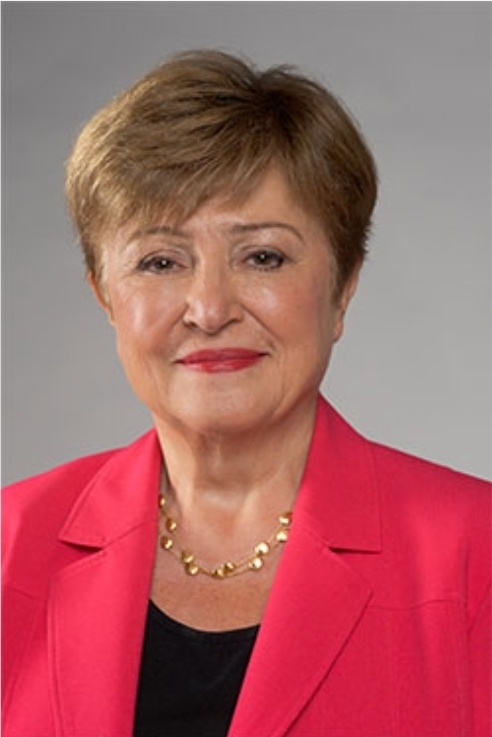Key Takeaways
- Kraken shutting down its Staking Program and being charged by the SEC for offering and selling unregistered staking-as-a-service securities could set a precedent for other crypto platforms operating in the same manner
- SEC’s charges against Kraken weren’t a strike against staking but rather against business practices of platforms offering modified staking products, which are considered securities
- Expanding Qualified Custodial requirements to include crypto drastically reduces the number of crypto platforms that can legally operate, further centralizing power amongst select crypto platforms that become Qualified Custodians
- Custodial requirements add additional layers of safety for crypto investors as it requires custodial platforms to segregate funds, provide yearly disclosures and public audits, and ensure customer funds are accessible in case of bankruptcy
- Custodial requirements are likely to reduce the number of custodial crypto platforms operating and adversely push retail and institutions on-chain via non-custodial solutions or running validators, ultimately improving decentralization
Introduction
The SEC has recently implemented a multitude of initiatives regarding staking and stablecoins. It claims its actions shield consumers while enforcing regulatory requirements. Regulatory bodies, including the SEC, hope their new initiatives prevent future crypto frauds. However, many in the crypto sphere worry that regulatory intervention will cause harmful adverse effects. Namely, regulatory red tape will centralize power amongst governments and financial institutions – directly contradicting the decentralized nature of blockchain technology.
SEC’s view and planned actions on staking will have a paramount impact on the industry outlook. Fortunately, Gary Gensler has recognized staking as a legitimate practice to achieve blockchain consensus. However, there are dissenting opinions on crypto platforms’ handling of staking programs, not staking itself. Although Kraken was the first to be charged, other platforms with similar products and operations are likely at risk of being charged.
ETH staking flows initially reacted negatively to SEC’s charges against Kraken but quickly recovered and surged to a weekly high when the Qualified Custodian rule was proposed to include crypto.

Let’s dig into what happened and what it means for staking. In our view, the recent developments are positive for the staking industry.
Kraken Shuts Down its Staking Program
Why did the SEC order Kraken’s Staking Program to be shut down?
The SEC deemed Kraken’s Staking Program as an illegal offering of unregistered securities due to Kraken’s ability to give customers an advantage and higher returns than independent staking.
Several factors about Kraken’s Staking Program led to SEC’s conclusions, including
- Staking on Kraken was passive for participants; no action required
- Kraken set staking yields, determined by opaque criteria. Instead, in legitimate staking, software determines yields.
- A partial portion of customers’ crypto was held as reserve, not staked, to ensure withdrawals.
- Kraken sent regular investment payouts, whereas legitimate staking does not follow a set schedule.
- No staking minimums
Can Kraken challenge SEC’s conclusions?
Kraken paid a $30M fine to settle SEC charges, ceasing its Staking Program rather than choosing to fight it in court.
Was the SEC after staking or after Kraken’s business practices?
The SEC complaint did not allege that staking is an offer or sale of securities. Instead, it claimed that Kraken’s Staking Program practices altered the nature of staking and touted features such as easy-to-use platforms, investment returns and payouts.
Staking directly on-chain is unaffected by the SEC’s charges, yet this event could set a precedent for potential action against similarly configured custodial crypto platforms. On-chain staking vs custodial staking is an important distinction that the media seems to skip over.
Staking isn’t a security because:
- Token owners remain in full ownership of their assets when staking, and can unstake them following the underlying protocol.
- Stakers are not connected by a common enterprise but by decentralized blockchain networks, hence failing to meet the “common enterprise” element of the Howey test.
- It’s argued staking services don’t meet the “reasonable expectation of profits” element of the Howey test, which examines whether an asset is purchased for investment returns or personal use. Staking rewards are payments for validating transactions on the blockchain network, not investment returns.
- Staking services don’t involve rewards based on the “efforts of others” under the Howey test. Service providers are not entrepreneurs, managers, or key contributors to determining customer rewards or the number of rewards received. Instead, the blockchain protocol governs which validator nodes receive rewards and how many, regardless of service providers.
What does this mean for staking providers in the future?
Regulatory scrutiny on centralized staking operations may vary based on the degree of centralization. Recent events have likely increased such scrutiny, though decentralized staking remains unaffected and may see higher demand for a non-custodial approach.
What does this mean for decentralization in the future?
The staking industry’s recent developments reinforce the resilience of decentralized operations, a positive sign for decentralization and the need to reach a decentralized future. On the other hand, Custodial crypto platforms may experience more centralization among less players as the SEC continues its crackdown and suggests extending the Qualified Custodian rule to digital assets.
Expanding the Qualified Custodian Requirements to Include Digital Assets
What are the new proposed rules for Qualified Custodian requirements?
Gary Gensler proposes to enhance the role of Qualified Custodians. The proposal affects registered investment advisers who custody assets (now including digital assets) on behalf of their investors. Ultimately, custodial requirements aim to remove the ability of an investment adviser to pay the proceeds that new investors invested to old investors (aka Ponzi schemes) and guarantee customers access to funds during bankruptcy proceedings. The rule requires advisers and Qualified Custodians to segregate all client assets, including crypto, and forbid advisers from relying on non-Qualified Custodial crypto platforms. By expanding the custody rule to crypto assets, investors working with advisers would receive the same safeguards as any other asset. According to Gary Gensler, most crypto platforms today aren’t Qualified Custodians and would need to overhaul operations. In addition, the new proposals require yearly disclosures, audits, and discretionary trading on investors’ behalf and apply to foreign financial institutions.
Why are crypto platforms likely to face scrutiny in the short term if the proposed custodial requirements are passed?
Today, some crypto trading and lending platforms assert custody over investors’ crypto assets, but that does not necessarily imply they are Qualified Custodians. Instead of appropriately segregating investors’ assets, such platforms have intermingled funds across investors. As a result, if these platforms go bankrupt, as has occurred, investors’ assets frequently become the property of the failed company, leaving investors in a queue at the bankruptcy court. Few crypto platforms can claim they are eligible to be Qualified Custodians.
How would the expanded custodial requirements affect the competitive landscape of crypto platforms and decentralization?
The SEC’s proposed rule would require SEC-registered investment advisers to use only “Qualified Custodians,” which may pose a challenge for advisers utilizing crypto platforms that don’t meet Qualified Custodian operating and disclosure standards. The proposed rule may result in the concentration of assets with a small number of registered custodians in the US, creating a new centralization force in the industry. SEC Commissioner Mark Uyeda also pointed out that trading crypto assets on platforms that are not qualified custodians would violate the proposed rule.
The proposed rules have several implications for the competitive landscape of crypto. First, only a handful of custodians would pass the Qualified Custodian requirements. Second, any new participants would need to seek approval from the SEC for Qualified Custodian status, which is no easy feat. Thirdly, this gives the SEC significant authority and oversight amongst crypto platforms and imposes a centralized governing body. Although not fully in line with the decentralization ethos of blockchains, such a proposal does assure users’ digital assets are safe. If these proposals were in place previously, FTX and Celsius, for example, would not have existed. As an unintended consequence of the new proposal, users will be pushed towards non-custodial, on-chain solutions, ultimately serving crypto for the better and improving decentralization. In addition, over a more extended time period, we believe institutions will opt to run validators to maximize staking rewards and avoid reliance on custodial platforms. Reducing the number of platforms that can legally provide staking through custody-based platforms will further accelerate institutional investors to run validators.
Conclusions
Ultimately, we believe the Kraken crackdown and Qualified Custodian expansion is good for crypto. It sets a standard for custodial platforms and spurs more interest in non-custodial staking. The expanded Custodian definition creates safety nets as users know their funds won’t be misused, stolen, or frozen in case of bankruptcy. Although this limits the number of platforms offering services in the short term, more clarity for participants will pave the way to legitimize digital assets in the eyes of the SEC.
The crypto space is a complex network of stakeholders; every step shifts the teeter-totter of power, favoring different stakeholders at different times. Ultimately, these steps are crucial for crypto’s widespread adoption and transition towards balance and increasing decentralization in the long term.
This is not financial or legal advice.



























